2021 Banshee Phantom V3
Test Location: Gunnison-Crested Butte Valley, Colorado
Test Duration: ~4 months
Size Tested: Medium
Geometry: See Below
Wheel Size: 29”
Travel: 115 mm rear / 130 mm front
Build Overview (as tested):
- Drivetrain: SRAM GX
- Brakes: Sram Code RSC
- Fork: MRP Ribbon Air
- Rear Shock: Fox DPX2 Performance Elite
- Wheelset: Ridefast Racing Hotline 29
Blister’s Measured Weight (w/o pedals): 32.3 lbs / 14.7 kg
MSRP:
- Complete bike, as tested: ~$5,199
- Frame, with Fox DPX2 Performance Elite shock: $2,249
[A note on pricing: Due to a variety of supply chain issues, Banshee currently only has framesets available. They plan to offer the same build spec that we’ve reviewed, as well as a SRAM X01 build, with Spank 350 aluminum or RideFast Carbon wheel options on both, later in 2021. Exact pricing has not been determined, but the build we’ve been testing retailed for $5,199 when it was last available in 2020.]
Reviewers:
- Eric Freson: 5’10”, 165 lbs / 178 cm, 75 kg; Ape Index +1.5; Inseam 31″ / 79 cm
- Luke Koppa: 5’8”, 155 lbs / 173 cm, 70 kg; Ape Index +1; Inseam 31” / 79 cm
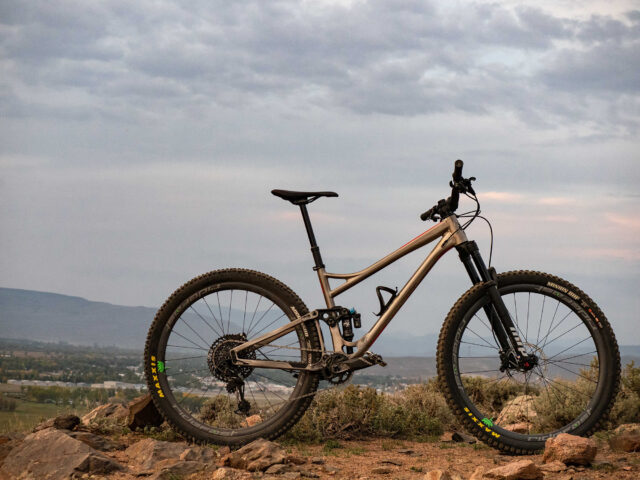
Intro
The Phantom has been in Banshee’s lineup since 2015. At that time, it was one of a very small number of short-travel, full-suspension 29ers with progressive geometry. And while that club has grown a whole bunch since ‘15, the Phantom has also been dramatically redesigned, and it was time to circle back for another look at the current, third generation.
Banshee has always been what I would consider a small “core” bike brand in the burgeoning mtb industry. They’re one of those manufacturers whose bikes you often see underneath up-and-coming talent before their first pro contract is signed; hard-charging veterans looking for a capable and burly bike that will hold up to seasons of abuse; and those who enjoy supporting an “indie” manufacturer.
I myself have personally owned two Banshees, the V1 and V2 Spitfire, and was really looking forward to getting back onto another.
Luke Koppa and I both spent a good chunk of time riding this “V3” iteration of the Phantom around Gunnison and Crested Butte, so we’ll both be weighing in here. But first, let’s go over the details and options of the Phantom V3.
The Frame
Like all of Banshee’s current bikes, the Phantom V3 frame is only available in aluminum.
The Phantom V3 has much of what you would expect from a modern, short-travel Trail bike: integrated chainstay protection, a threaded bottom bracket, ISCG ‘05 compatibility, cable routing that’s internal and guided, water bottle cage in the main triangle, and low standover height.

Something that’s been a part of Banshee’s DNA for many years is offering a great deal of frame adjustability, via modular dropouts. These offer a range of geometry settings, as well as options for wheel size and even dropout spacing, giving Banshee’s bikes (the Phantom V3 included) an unusually high degree of adaptability, both in terms of geometry and when it comes to wheel size and compatibility with various hub standards.
The Phantom V3 has two different geometry settings, which are adjusted via flip chips located where the dropouts attach to the frame. In the “neutral” position, the bike has a 66.5° head angle and 77.2° seat tube angle. Those numbers change to 66° and 76.7° in the “low” geo setting. “Long” and “compact” versions of the dropouts are available as well. The compact version is the default selection for the Phantom V3, and those yield 445 mm chainstays across all sizes, and stated clearance for a 29×2.6” or 27.5×2.8” tire. The long dropouts lengthen the chainstays by 9 mm, to a massive 454 mm, and increase tire clearance to 29×2.8”. Both lengths of dropouts can be had in 148 (Boost) or 142 mm (non-Boost) spacing. Banshee says you can run a fork between 120 mm to 140 mm on the Phantom V3, and reach ranges from 445 mm on our Medium test bike, through 495 mm on the XL.
The tubing of the Phantom V3 is all hydroformed (and it’s freaking gorgeous) and Banshee uses a proprietary suspension linkage platform, dubbed KS2. The Phantom has 115 mm of rear travel and KS2 is a dual-link design that has a trunnion-mounted shock positioned inside a forged “cage” above the bottom bracket. Banshee recommends either a coil or high-volume air shock on the Phantom V3, but notes that the Push ElevenSix, DVO Topaz 2, and Fast Fenix rear shocks are incompatible due to interference with the shock cage.
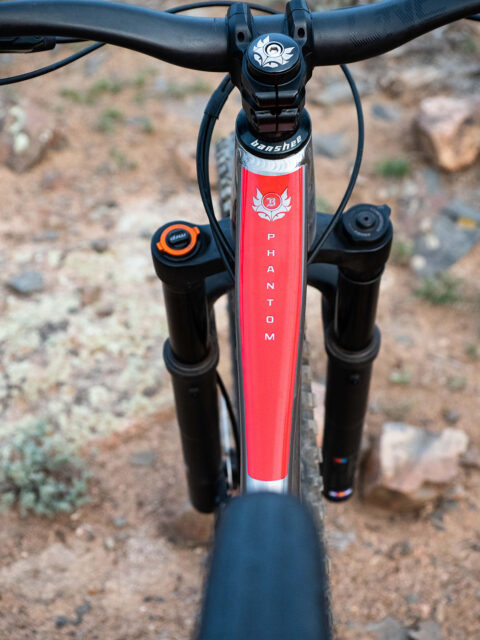
The previous version of the Phantom had 105 mm of travel, and the shock was mounted horizontally. The reoriented shock lowers the center of gravity and opens up space for a longer shock, to reduce the overall leverage ratio. That reduction of leverage on the shock reportedly results in a more supple, responsive suspension platform, and an improvement in the shock’s ability to manage heat.
The Builds
Banshee’s claimed frame weight for the Phantom V3 is 7.8 pounds for the size Medium. That will set you back $2,249, a price that includes a Fox DPX2 Performance Elite shock, pre-installed headset, and your choice of dropouts.
Frame size options are M, L, and XL. The Phantom V3 won’t be the best fit for those who are on the shorter side of the spectrum as they don’t offer S or XS frames. Banshee’s recommended sizing for the Medium starts at 5’7” (170 cm).
In the U.S., Banshee frames and complete bikes are only sold through dealers. As mentioned in the specs, Covid-related supply chain issues mean that Banshee is only offering frame kits as of publishing this review, though they plan to bring a few options for complete bikes back later in 2021, with pricing to be determined.
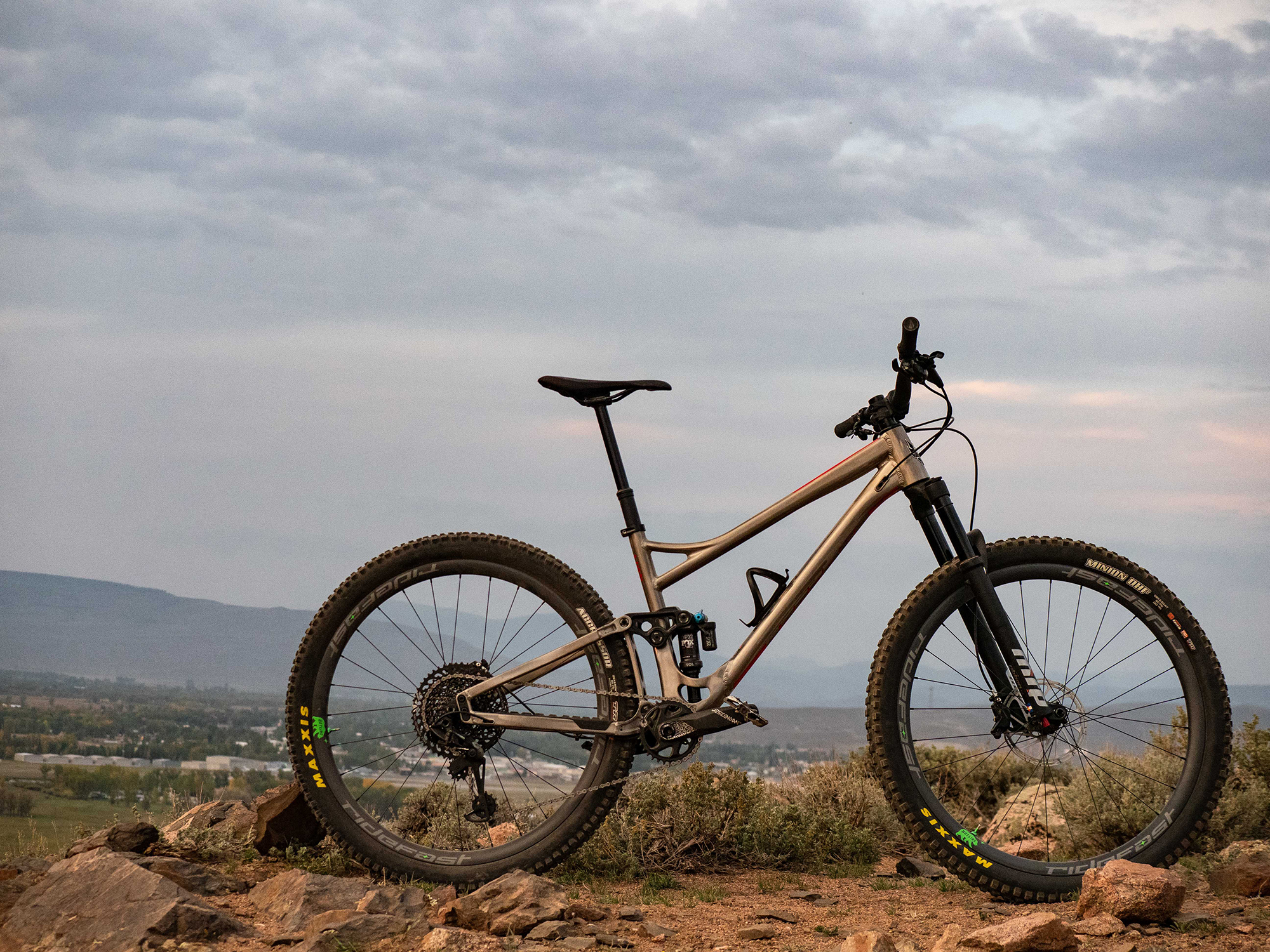
Here are some of the highlights of the Phantom V3 build that we’ve been testing:
- Drivetrain: SRAM GX
- Fork: MRP Ribbon Air
- Shock: Fox DPX2 Performance Elite
- Brakes: SRAM Code RSC
- Wheelset: Ridefast Racing Hotline 29
- Front Tire: Maxxis Minion DHF (Exo+ casing)
- Rear Tire: Maxxis Aggressor (DD casing)
- Dropper: OneUp V2
- Bar: OneUp Carbon
- Stem: OneUp
Thoughts on the Build
Eric Freson: While it certainly makes for a capable bike on the descents, I struggled a bit with the build on the Phantom V3. As configured for our test, the Phantom V3 felt overbuilt. This parts spec wouldn’t be out of place on a long-travel Enduro bike, but that feels like overkill, given the Phantom’s 115 mm of rear-wheel travel.
Banshee sent the Phantom V3 with SRAM Code RSC brakes, Ridefast Hotline wheels (which Ridefast recommends for “AM/Enduro/Gravity” usage) and pretty burly Maxxis tires. If you ride in the bike park, like to slap berms with abandon, or huck to flat as part of a normal ride, then I wouldn’t change a thing. It’s an attempt to allow a more nimble and playful frame to play nice with the high speeds and smash-and-grab mentality that many of us have become used to when riding hyper-capable Enduro bikes. The build on the Phantom feels a bit like Banshee trying to allow you to have your cake and eat it too. You get your high-energy, fun input / output Trail bike, but, you shouldn’t be stressing about folding wheels. And if you are just someone who is heavier, breaks a lot of things, or rides in sharp terrain, then this just may be the way you need to build every bike regardless of intended use.
If this was my personal bike, though, it’s not how I’d go about building it. I’d prioritize weight more, especially in regard to rotating mass and drivetrain performance. There are many lighter wheel / cassette / tire combos that provide excellent performance while still being strong enough for how I’d typically ride this sort of bike.
With all that said, the MRP Ribbon Air was a standout for me. In a shorter-travel application such as the 130 mm used here, MRP’s dual-air design, with independently adjustable positive and negative chambers and Ramp Control cartridge did, in fact, allow me to have my cake and eat too. I was able to set the fork up to be sensitive off the top, but also ramp up progressively (and adjustably) at the end of its travel, which meant that I didn’t need to pick between a stiff and linear setup, or one that was soft off the top and bouncing off the end of its travel every other minute. The Ribbon also features pressure relief valves on the back of the fork legs, which I found to be fun and functional. I really like this fork.
The RideFast Hotline wheels were new to me. These carbon rims didn’t feel as much like “traditional” carbon rims to me as I expected. What I mean is that I found them to skew heavily to the “compliant” side of the spectrum in terms of on-trail ride feel for a carbon rim — damped and not chattery. For me, this is a double-edged sword; the Hotline’s traction under load was excellent for a carbon rim, and I never felt them flexing out under any hard cornering loads or large g-outs. But the trade-off is that, if you enjoy the precision or super quick feel that stiffer, traditional carbon hoops often afford you, I didn’t find those sensations as noticeable with the Hotline as compared to other carbon options out there. In my mind, this is by no means a knock against the Hotlines — they just felt very “normal,” particularly coming from aluminum rims.
The SRAM Code RSC brakes had good feel and modulation, but were probably more powerful (and heavier) than I needed in this application. Between running out of braking traction and not carrying the type of speed I might on an Enduro bike, I could have gotten away with “less brake” in this instance. But still, better to have it and not need it…
The biggest miss for me in this Phantom V3’s build was the Sram GX drivetrain. I’ve gotten along fine with GX drivetrains on certain other bikes, and my complaint here is highly application-specific. On a longer-travel “winch-and-plummet” type of bike, where you put it into the 50-tooth cog and spin your way to the top, the GX setups work great. With a bike like the Phantom V3, though, where I often found myself on more undulating trails and attacking both the climbs and descents, I was moving through the gearing much more frequently, and under more load, more often. It was in these instances where I noticed the GX performance as a bit underwhelming.
If I were building up my own Phantom V3, I’d prioritize the drivetrain and put the nicest-shifting setup that my budget allowed for, knowing that part of the fun of a short-travel bike like the Phantom V3 is putting the hammer down everywhere (not just the descents). Higher-end Shimano drivetrains, in particular, do an especially good job of shifting under load, and thereby feel well suited to the Phantom V3. I’d try to put at least XT, if not XTR on if I were building one up myself.
Luke Koppa: I agree for the most part here. As someone who is generally less fit and less aggressive on the ascents than Eric, though, I didn’t have as many complaints about the generally downhill-oriented build spec on our test Phantom V3.
I typically spend most of my time on longer-travel bikes in the Enduro category (e.g., Specialized Enduro 27.5, Revel Rail, Rocky Mountain Instinct BC, Trek Slash), and generally don’t prioritize pedaling performance quite as much as Eric. And given that I tend to make a whole bunch of mistakes on the descents, I appreciated how familiar the burly build on the Phantom V3 felt, coming from longer-travel bikes.
I also loved the MRP Ribbon. I very quickly found a setup that worked well for me, and I think it did an excellent job in terms of providing a more supple (but still plenty supportive) ride than I would’ve expected, given that it has several cm’s less travel than the other bikes I’ve been riding. I also really liked the Fox DPX2 Performance Elite, probably in part because it’s the shock that was on two of the other bikes I was riding last fall and summer. Overall, one of the clear standout features of the Phantom V3 we tested was how well-managed its suspension felt on the descents, given its relatively small amount of travel.

Regarding the Ridefast Hotline wheels, I really liked them. I’m on the opposite end of the spectrum when it comes to wheels, compared to Eric — I’ll take compliance and a smoother ride over maximum stiffness in basically all situations. The Hotline wheels felt a bit lighter and quicker than the alloy rims on most of the other bikes I’ve been on, without feeling notably more harsh or “ping-y.”
I love Code brakes, though I’m sure I could get away with some lighter and / or less expensive ones on a bike like the Phantom V3. But I sure wasn’t wishing for something else when things got steep and fast.
I’ve used GX drivetrains on several bikes, and I’m generally fine with it, though I definitely agree with Eric in that its poorer performance under load, compared to something like the Shimano XT system, is more noticeable on a bike like the Phantom V3 than on my “sit & spin,” longer-travel bikes.
Overall though, the Phantom V3 we tested made for a very familiar ride, coming from bigger bikes. There are certainly areas where you could make it lighter and more efficient on the uphills and rolling terrain. But personally, I think this build kit was a big part of why I was able to hop on this bike and quickly be comfortable riding nearly as fast on most descents as I would on longer-travel options.
Fit & Geometry
Like Banshee’s other bikes, the Phantom V3’s geometry is fairly progressive, but isn’t pushing the bleeding edge of the long / low / slack arms race, either.
For the size Medium we’ve been riding, here are some key numbers (with the dropouts in the “low” setting):
- Reach: 445 mm
- Head Tube Angle: 66°
- Seat Tube Angle (effective): 76.4°
- Chainstay Length: 445 mm
- Wheelbase: 1199 mm
As a modern short-travel Trail bike, its numbers aren’t far off from Enduro bikes of five years ago. This is a good thing. The Phantom V3 is more relaxed while descending than a more XC-oriented bike, but still fits and performs well when the trail gradient isn’t constantly steep. It’s fun in the vast majority of riding conditions, and the rider aboard the Phantom V3 will make fewer compromises on an average day than the same out on a XC-race rig, or an Enduro sled.
For reference, here’s the whole geo chart for the Phantom V3:
Thoughts on Fit & Geometry
Eric Freson (5’10”, 165 lbs / 178 cm, 74.8 kg): The Phantom V3 is not a super long bike, in terms of reach or wheelbase. Where it is notably long, for its class, is when it comes to chainstay length. Despite the long chainstay length, the Phantom didn’t fight me if I wanted to lift the front wheel, manual, pump the bike over features, or take to the air. I do notice the stretched-out chainstay manifest as an increased feeling of stability and rear-wheel tracking ability in rougher terrain, and I would attribute some of the bike’s capable feel in these instances to this choice. This design is a nice way to up the overall speed limit of the bike, without taking away from some of the benefits of the shorter cockpit and wheelbase. Kudos to Banshee.
I think the Phantom V3’s slightly more compact cockpit feel, compared to many long-travel Enduro bikes, and a wheelbase that isn’t going to make your eyes pop, are a great fit for the average speeds, tighter trails, and more playful-oriented scenarios you are likely to experience on typical trail rides on an “aggressive short-travel” bike like the Phantom V3. For someone who has grown accustomed to putting in a lot of body English or movement in front or behind the center of a long bike, though, you may find less space here than you’re used to.
If I were to buy one for my personal use, I probably would have gone for the Large frame, primarily for its longer reach. Many of the bikes I spend time with these days are a bit more stretched out, and the Medium Phantom V3 could at times feel a bit compact, especially when climbing.
Luke Koppa (5’8”, 155 lbs / 173 cm, 70 kg): While Eric is on the upper end of Banshee’s recommended size range for the size Medium Phantom V3, I’m on the lower end.
I ended up getting along really well with this size, but its longer chainstays (and likely, the fact that the reach and chainstays are reportedly identical) took some getting used to. While I didn’t find myself feeling like the front of the bike was too short, cornering on the size Medium Phantom V3 required a bit of an adjustment period. Mostly, I needed to keep my weight a bit more centered between the wheels, rather than focusing on keeping pressure over the front of the bike.
After about a week of riding, though, I began to love the Phantom in corners and (surprisingly) through higher-speed sections. It felt far more stable and composed at high speeds and when layed over in a turn than I expected.
I suck at manuals no matter what bike I’m on so I don’t care too much about that, but I did notice the Phantom V3’s longer rear end before and during jumps. As in corners, I just needed to tweak my fore-aft balance a bit, but I got used to this after a few rides.
I do think the Phantom V3 is an interesting example of how changing chainstay length might make sense across sizes. While I loved the high-speed stability of the size Medium Phantom V3 (for what it is), I think I might have gotten along with it slightly better — particularly in tighter sections and rolling terrain — if its chainstays were a touch shorter. And if you’re shorter than me, I think this might be even more noticeable, especially since the size Medium is the smallest currently on offer.
In the end though, I never found myself thinking that the Phantom V3’s geometry was really holding me back or otherwise a notable downside (in most cases, it was the opposite). Rather, it just required a longer adjustment period, compared to several other modern bikes I’ve been on.
Ride Impressions — Climbing
Eric Freson: The Phantom V3 is a highly proficient climber, no doubt about it. It loves to attack trails, and build energy / momentum. My climb times on it were faster compared to the longer-travel bikes I often find myself on, and my legs felt fresher at the top.
As I noted above, where I most enjoyed the Phantom V3 was climbing in rolling or undulating terrain, such as Hartman Rocks, in Gunnison, Colorado. It’s not hard to zone out and spin your way to the top of a large climb, but when the terrain is more varied, it was a lot of fun to have a bike that was keen to pump terrain and build speed, even on the climbs.
The Phantom V3’s KS2 suspension does an admirable job resisting pedaling forces on the way up, and I didn’t feel the need to use the climb switch of the shock, something I’m quite picky about. Ample traction is available, and the Phantom V3’s anti-squat isn’t so aggressive that I felt like it was keeping the wheel from tracking the ground and maintaining grip.
The geo of the size Medium Phantom V3 put me in a position to feel efficient while seated and climbing, and even on longer and sustained climbs, I didn’t notice myself standing out of the saddle to readjust or moving around in the saddle to give muscle groups in my legs a break. Standing out of the saddle and attacking didn’t lead to spinning tires, either.
As a fairly heavy frame for its amount of travel, I don’t think you will find many who choose the Phantom V3 as their ride of choice for a cross-country race weapon. But for riders who like marathon races, stage races like the BC Bike Race, or enjoy long days in the saddle but would also like more progressive geometry than most <120mm-travel bikes, the Phantom V3 would squarely fit the bill.
Luke Koppa: Yep, agreed. The Phantom V3 we tested doesn’t feel like the snappiest, most efficient bike out there, but it made the uphills a whole lot more enjoyable than they’d be on the longer-travel rigs I’m usually on.
I also never felt the need to flip the climb switch on the Phantom V3’s shock — I loved its combo of traction and efficiency when open. And particularly on steep, loose climbs, I think the Phantom V3’s longer rear end was a plus in terms of helping me keep the rear wheel weighted and gripping, rather than spinning out.
If I were looking for a bike that’d make the climbs feel as easy and enjoyable as possible, I’d look to something much lighter and generally oriented toward that side of the riding spectrum. But I found that the Phantom V3 struck a nice middle-ground for me — significantly better on the up than longer-travel options, but still very capable on pretty fast, rough descents. I’d rather not need to drastically change my riding style when switching between bikes and the Phantom V3 allowed that on the descents, while still climbing notably better than bigger bikes.
Ride Impressions — Descending
Eric Freson: Banshee suggests running the Phantom V3 with 25-28% sag, but I found myself skewing to the higher side of that spectrum in the search for as much traction as I could eke out of this shorter-travel bike. With the way this bike was built up, it asked to be ridden aggressively, and often I would catch myself and remember I had 30–50 mm less travel than most bikes I’ve been spending time on recently, such as the Trek Slash, Rocky Mountain Instinct BC, and Revel Rail.
The Phantom V3’s KS2 suspension feels pretty similar to many of the DW-Link and older Santa Cruz VPP (i.e., before their switch to the lower-link-driven design) bikes I have ridden. Which is to say it generally falls into the “supportive” side of the rear-suspension continuum of squishiness, rather than “ultra plush.” Thankfully, the Fox DPX2 and the leverage curve of the Phantom V3 provide enough bottom-out resistance that the 115 mm of rear travel on tap doesn’t let me know every single time I use all of it.
The Phantom V3 builds speed well, and is only too happy to use terrain features to create speed or get airborne. It thrives on fast, pump-y terrain, and wants you to get on the pedals out of corners to get to the next one sooner.
With the build the Phantom V3 came with, it is also very capable of being thrown straight into rough sections of trail with abandon. But you will be reminded that this is a bike with only 115 mm in the rear and find the back end packing up on you when you do. It’s much the same with the front end of the bike. The fork is highly capable for having just 130 mm of travel, but that limited travel reminds you that you might not want to go full-ham everywhere, either.
The one shortcoming I have noticed with the KS2 suspension platform, (perhaps due to its early rearward travel) is that, if I managed to catch the rear wheel on an obstacle when the shock was fully extended / topped-out, I could feel the rear wheel get hung up (grabbed) for just a moment, as opposed to a more traditional axle path, where the wheel would move up and out of the way, instead of back. I never noticed this under impacts where the shock was settled somewhere deeper in the stroke, only when catching a square-edged hit with the shock fully uncompressed, such as on a landing.
For the most part, the Phantom V3 descends like you would expect from a burly 115mm-travel bike with relatively progressive geometry. It’s fast and efficient, thrives on flowing and smoother terrain, and encourages you to build speed everywhere.
The Phantom V3 we tested does punch a bit above its travel class when descending as a result of (1) its notably burly component selection, and (2) its progressive geometry numbers compared to other short-travel bikes with more conservative geometry. I think the Phantom V3 does encapsulate the idea of a “downcountry” bike really well. If you are coming from another frame with similar travel but more traditional numbers and / or a more weight-conscious build, the Phantom V3 will feel more composed at speed and in rough terrain.
Luke Koppa: Yep, not a whole lot to add here. Overall, I was really impressed by how fast I found myself riding the Phantom V3, given that I spend most of my time on bikes with 30–50 mm more travel and more downhill-oriented geometry and components.
As soon as I got used to the Phantom V3’s fit / geometry, I was riding most trails with as much aggression and speed as I would on bigger bikes, apart from the roughest, steepest routes around Crested Butte. And on more undulating terrain, I’m sure I was going faster.
The main areas I noticed the Phantom V3’s relatively small amount of travel were steep, sustained, rough sections of trail. There, this bike just requires a bit more attention to line choice (in the case of my sloppy riding, that means thinking about line choice whatsoever). The Phantom V3 we tested performed very admirably in terms of how relatively smooth and planted it felt, given its small travel numbers. But when subjected to repeated high-speed impacts, I had to provide a bit more of the suspension myself.
As someone who isn’t frequently seeking out the absolute gnarliest of trails, though, I think I could be quite happy with the Phantom V3 for the vast majority of my rides. Its geometry never felt like it was holding me back when I was pushing it on the descents, and the MRP Ribbon + Fox DPX2 + KS2 linkage made for a surprisingly comfortable, composed ride — all while having travel numbers that won’t evoke the “compensating for something?” remarks from my buddies.
Bottom Line
Eric Freson: I enjoyed my time aboard the Banshee Phantom V3. It encapsulates what I think a good “downcountry” or “short-travel Trail” bike should do. It can thrive in most trail environments and survive almost anywhere. For someone who wants to log a lot of miles, ride some more technical descents, and do it all on one bike, it could be a great fit. If you enjoy supporting small core bike brands, are a fan of aluminum, or like to tweak your geo and / or builds, that’s so much the better and really helps this Banshee rise to the top of the list.
I felt fast aboard the Phantom V3, especially when the days were long, or the terrain was moderate. If it were my personal bike, I would choose to build it up differently than the version we tested, and feel that would do even more to help the bike thrive in its intended use.
If you are reading this review and thinking you would likely build it up similar to our test bike, one of Banshee’s other frames with more travel (e.g., Prime V3) deserves serious consideration as I think it might align better with the expectation of how the bike would perform.
The Phantom V3 is a precise tool, and not a smash-and-grab blunt object. Treat it as such, and you will be rewarded with a well-thought-out, well-designed bike that can punch a bit above its travel class, but won’t fool you into thinking you’re on a ~6” travel Enduro bike, either.
Luke Koppa: As someone who spends a lot of time on those sort of long-travel Enduro bikes Eric just mentioned, the Banshee Phantom V3 made for a surprisingly intuitive and capable short-travel bike. Its geometry and the build kit we tested made me quickly feel comfortable riding it very hard and fast on the majority of our local trails, but it still felt substantially more efficient and generally fun on more moderate terrain than my typical, more-cushy bikes. On top of that, the Phantom V3 strikes me as a bike that should hold up to a lot of abuse (especially compared to lighter bikes in this travel class). And, as mentioned above, it’s freaking gorgeous.

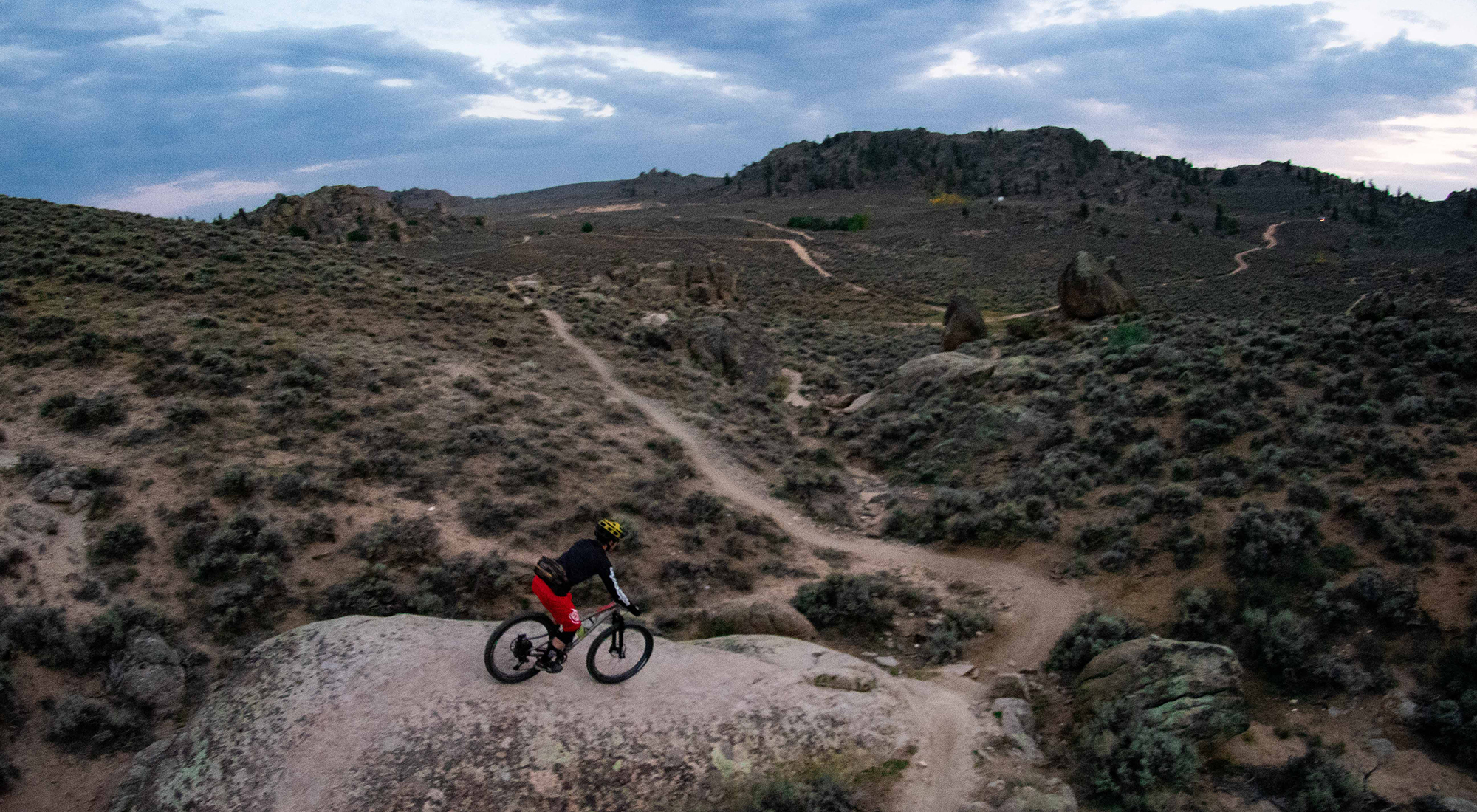
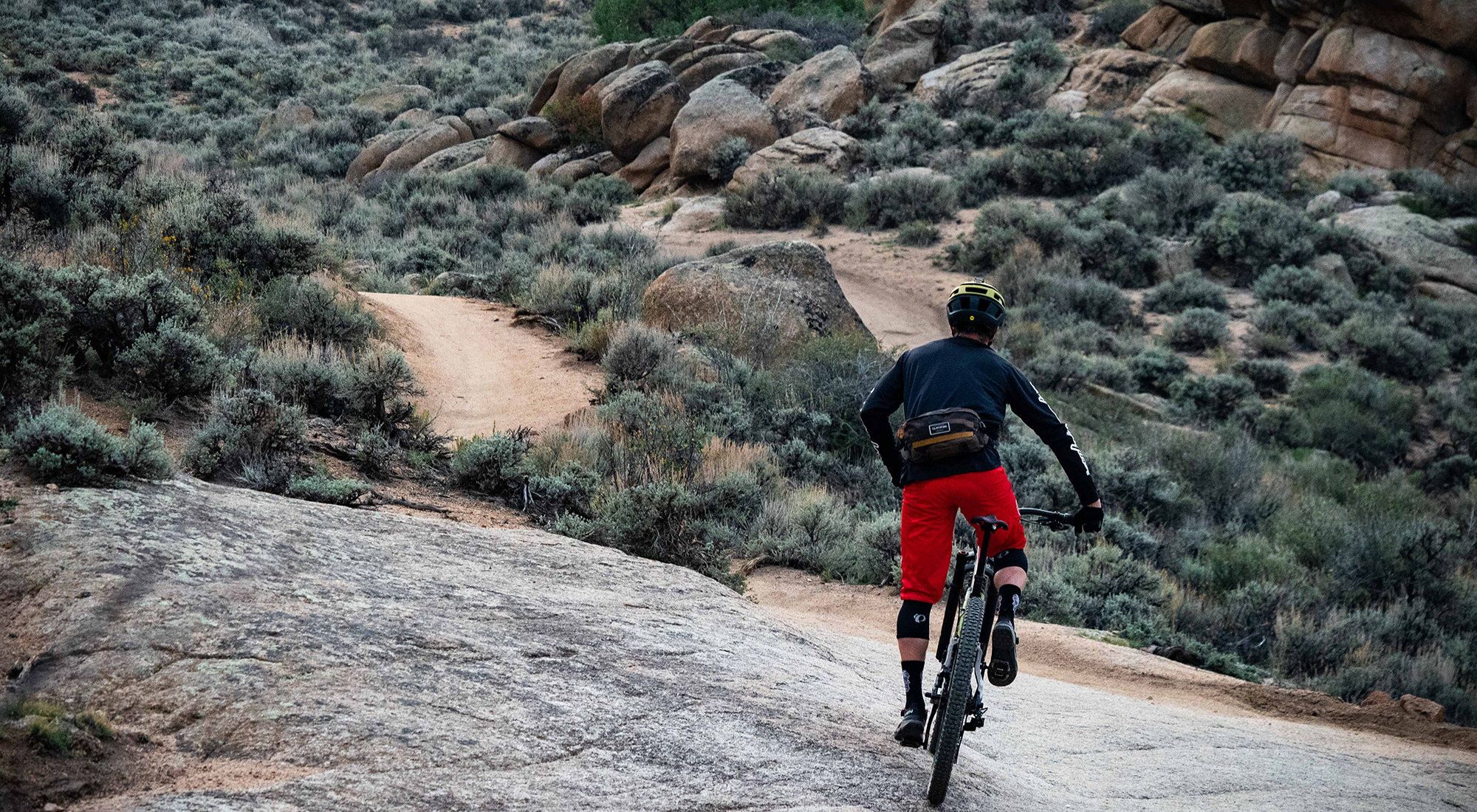
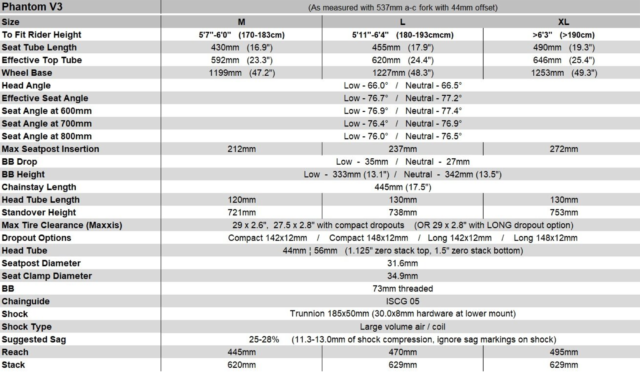
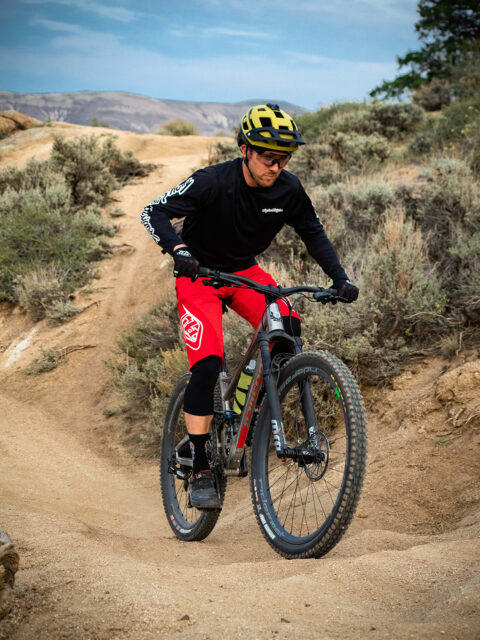
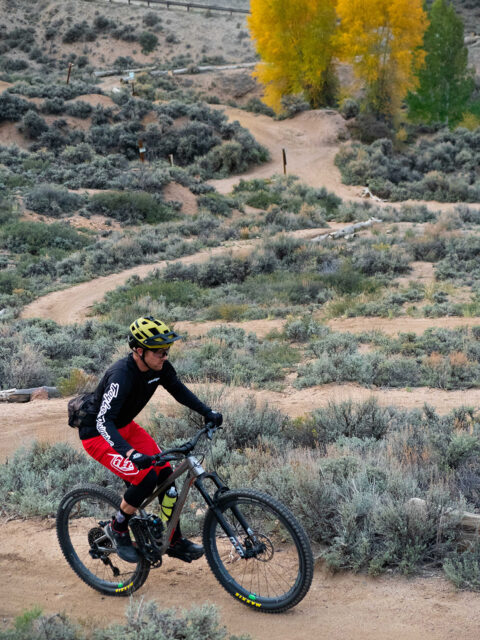
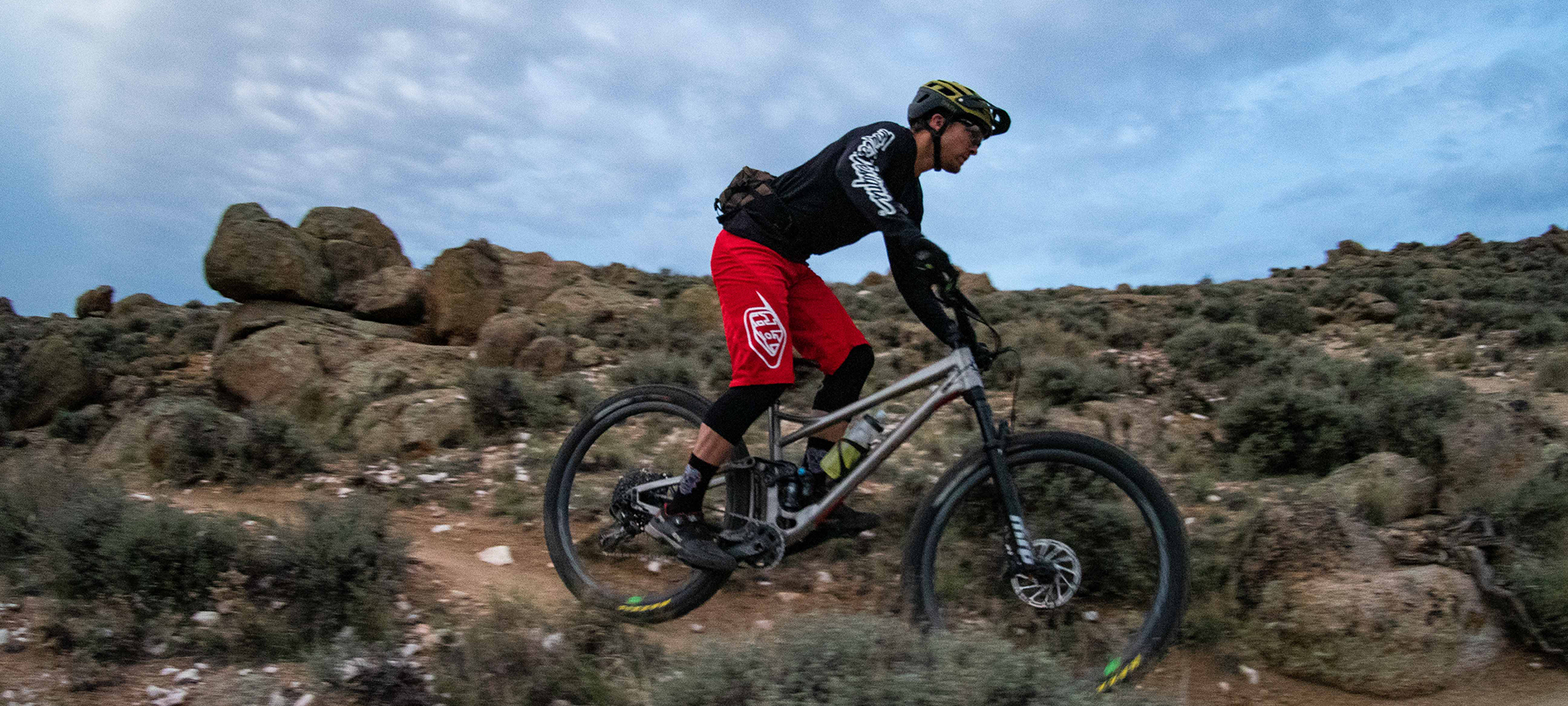

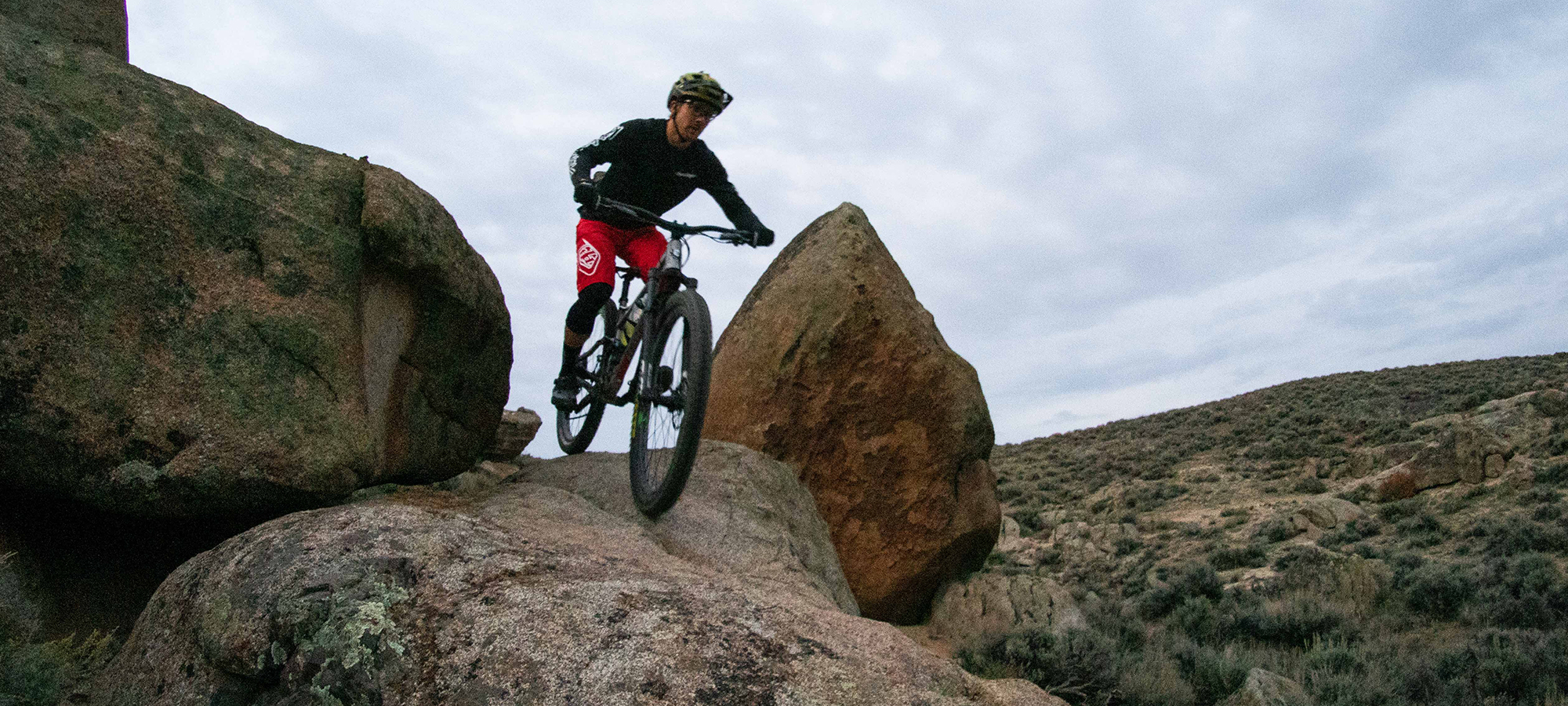
Nice review of this, one of the bikes I’ve always wanted, but the XL just isnt big enough unfortunately.
Great review. Sounds like a really nice bike, but a 7.8 pound 115 mm frame is an impossible sell to every single rider I know shopping that zone. Right or wrong.
Really nice to see some love for the MRP fork. I’ve always been curious.
Thanks!
I’ve been on mine for a month now. I agree with all of that. I’m shocked by how well is wants to corner, but I do find it takes a good effort to get the front up. I’m still adjusting. The high-speed feel is great. If the long chain stays are responsible for that, then I’ll take the trade-offs. Suspension is very progressive. I’ve never been on a bike so progressive. It loves to land flat.
And, yeah, it is a heavy frame. It’s also cheaper than carbon and a lot easier to afford. There is a part of me that wouldn’t mind trying a Spur to see if a lighter bike was more fun.
I have this bike and totally love it. I have an XL built under 30 lbs with sram X9 10 speed, and i9 Trail 270 wheels, pike 140, and Chromag Cutlass bars. Agree the XL is not going to be big enough for super tall guys. I’m 6’2.5″ and the XL is perfect with a 50mm stem. I really like this review, it makes me happy that I’ve chosen the build choices I did. But ultimately that’s for each rider to know about themselves. I would also say this bike feels agile in the XL… This is in the low/slack configuration. Just feels very balanced climbing, or landing, and really comes alive at speed, proportioned just where it needs to be, corners well. Leans and stands back up in a fluid manner. I have the 51mm offset pike, but I think maybe either offset will do fine with this HTA. Nothing but good things to say.
Waiting for mine to arrive!
Nice write up. I agree with most of what you had to say minus the digs at GX. I prefer GX to any of the 12 speed Shimano offerings. It is simple and works.
This really is a downcountry bike so the added weight of the frame does not bother me. I’ve been on one for about 6 months now and am pretty happy with it. I am a previous Spitfire V1 owner and really like how Banshee approaches bikes. Mine is built at about 32 pounds with a 140mm DVO Diamond that is set to be replaced by a Helm MK2 from another bike that is about to become the donor bike for my Spire that just shipped. That fork improvement will make this bike really shine. I may try it with a coil as well but I think that may push it too close to my long travel bike. Overall this is a bike that pedals really well and is not afraid to get nasty when needed.
This review really sold me on a Phantom. I’m a heavy Clydesdale, and I’ve found most full-suspension bikes aren’t sturdy enough. What’s too burly for an average person is just right for me, and the excellent leverage ratio means I’m not at maximum pressure on the shock.
They unintentionally created a bike for a demographic they didn’t know they had.
600 miles on mine, previous owner included a 130 Pike and a DHX2 coil, it runs great! Tried the long wheel base before enjoying the short ones better, I almost can’t believe that it has 115mm of travel as I find myself charging and progressing a whole lot more. Still banging >40mile rides on it.
Very predictable and capable.